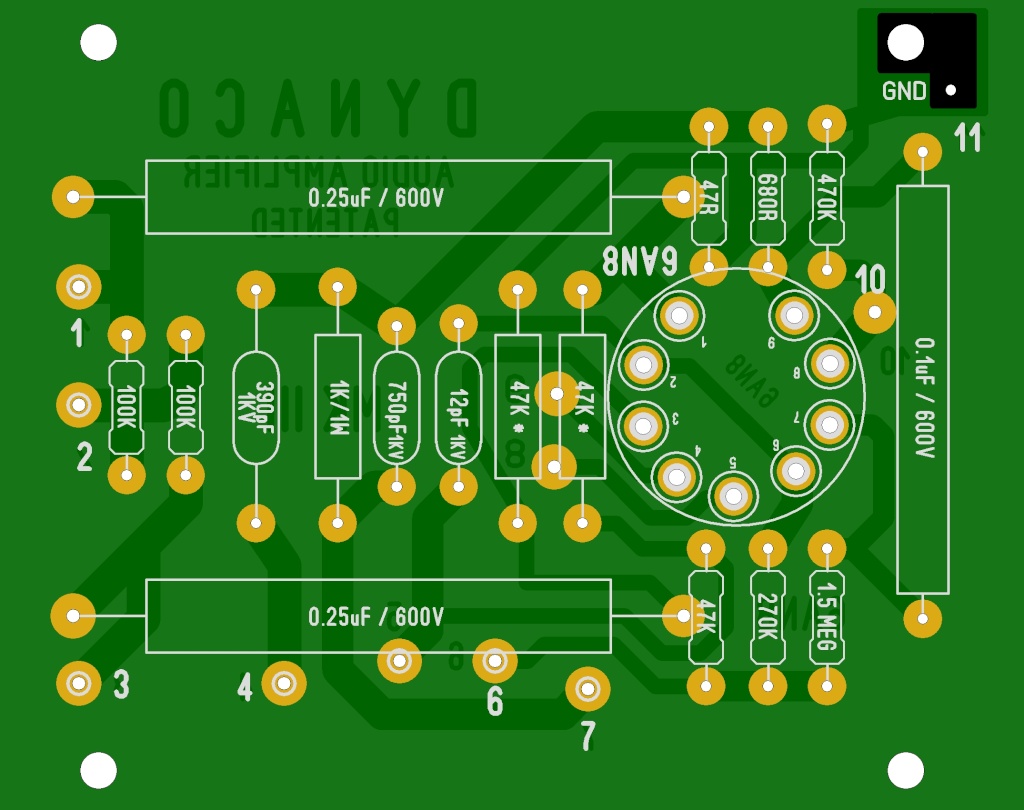kwingylee
Well-Known Member
All:
I embarked on rebuilding my Dynaco Mark 3's that I purchased a few months ago. One worked perfectly and the other one worked intermittently.
I began worked on the one that was intermittent. I have replaced all of the power supply and coupling caps.
I have also began replacing the resistors in the circuit board and the ones beneath the chasis. I found one resistor that drifted way off.
However, I found some anomalies.
1. I cant ascertain the value of the part that is directly to the right of the 1K OHM resistor (left of the AN8 tube). Can someone enlighten me on it?
2. I cant locate the rectifier diode as shown in the schedmatic. Also, some schematic show a 1K resistor to the anode side of the diode while other show 4.7K. Which one is more current?
3. Finally, the amps came with 3A slow blo fuse. The fuse blew after I played music on the amp (post mod) for awhile. There is nothing but a switch on the primary side. What gives?
4. I was to keep the original boards as design by Hafler. Which set of resistors require close matching?
5. FInally I am putting in metal film resistors vs carbon film resistors... any issues with that?
Any help will appreciated.
Kwing
I embarked on rebuilding my Dynaco Mark 3's that I purchased a few months ago. One worked perfectly and the other one worked intermittently.
I began worked on the one that was intermittent. I have replaced all of the power supply and coupling caps.
I have also began replacing the resistors in the circuit board and the ones beneath the chasis. I found one resistor that drifted way off.
However, I found some anomalies.
1. I cant ascertain the value of the part that is directly to the right of the 1K OHM resistor (left of the AN8 tube). Can someone enlighten me on it?
2. I cant locate the rectifier diode as shown in the schedmatic. Also, some schematic show a 1K resistor to the anode side of the diode while other show 4.7K. Which one is more current?
3. Finally, the amps came with 3A slow blo fuse. The fuse blew after I played music on the amp (post mod) for awhile. There is nothing but a switch on the primary side. What gives?
4. I was to keep the original boards as design by Hafler. Which set of resistors require close matching?
5. FInally I am putting in metal film resistors vs carbon film resistors... any issues with that?
Any help will appreciated.
Kwing



![IMG_1391[1].jpg](/forums/data/attachments/372/372948-ba761205623c21cbca3bfe9a6c5eff62.jpg)
![IMG_1393[1].jpg](/forums/data/attachments/372/372949-2be29833c3dc3df92d0dcd9bf901bc4b.jpg)
![IMG_1394[1].jpg](/forums/data/attachments/372/372950-76456585e13c401850640cf0ba10c901.jpg)
![IMG_1395[1].jpg](/forums/data/attachments/372/372951-f3e637c9d1855fa411125bd0b00b3a42.jpg)
![IMG_1398[1].jpg](/forums/data/attachments/372/372952-8285324cbeca1729ec1bb381c826da71.jpg)